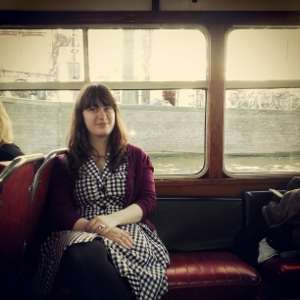The last concert in Rotterdam Philharmonic’s “Russian Fall” series centered around one of the most monumental Russian symphonies ever written: Shostakovich’s Fourth. But the evening opened with something completely different: Beethoven’s Piano Concerto no. 2. Before the concert I was slightly worried about the pairing of these two works together: apart from the fact that they were both written by young composers, they don’t really have much in common.
Beethoven’s concerto is comfortable and soothing to listen to, the entire piece flows beautifully – and this was definitely enhanced by Martin Helmchen’s sensitive playing. The cadenza in the first movement is somewhat more turbulent and less comfortable, foreshadowing Shostakovich’s symphony. Although it is a wonderful piece, it was overshadowed by the symphony in almost every respect. For the Piano Concerto No. 2 the orchestra was more like a chamber orchestra, with no clarinets, no percussion and two horns as the only brass – a stark difference to the monumental number of musicians playing the Shostakovich symphony. The Rotterdam Philharmonic was excellent both times, however, and their Beethoven was subtle yet energetic. Mark Elder guided them with much passion, while seeming to be in complete control of both the volume and speed, all of which contributed to the beautiful fusion of the solo piano and the orchestral sound. The transition for the orchestra from this calm chamber piece to Shostakovich’s monumental symphony was handled surprisingly well and they seemed equally comfortable with both.
Perhaps I should preface my writing about Shostakovich’s Symphony no. 4 by admitting that it is my favourite symphony. As a work it is unique in how completely it seems to invoke and portray human emotions: it easily switches from being funny (to which the woodwinds often contributed), to being painfully bleak, to just being heartbreakingly beautiful – but never are these transitions incomprehensible or overdone. As a consequence hearing this symphony live can be emotionally draining and is certainly an absolutely exhilarating experience, something that the Beethoven concerto was not on this occasion.
Conductor Mark Elder spoke briefly before performing the symphony, explaining some of its history, and I believe that although often these kind of introductions are redundant it is certainly of an added value when it comes to this symphony, as it has such a rich and intriguing history. Shostakovich completed it in 1936 and rehearsals started for its première that year. At some point during these rehearsals, however, Shostakovich was made to understand that if the symphony were performed, he would have to fear for his safety. Earlier in 1936 the famous anti-Shostakovich article “Muddle Instead of Music” was published in the newspaper Pravda, and Shostakovich was well aware of the negative atmosphere surrounding him. Furthermore, colleagues, friends and relatives started to disappear or become imprisoned and we can only imagine the terror and fear this caused. Shostakovich’s withdrawal of the Fourth Symphony was probably a very smart move and might have saved his life.
The environment of terror that Shostakovich was living in at the time of this symphony is recognizable in almost every single note. There are still fragments of hope (especially in the solo horn melodies), and even joy, but these are only short-lived. The structure of the symphony is quite idiosyncratic; the first and third movements are massive, with the first clocking in at almost 30 minutes, while the second movement is just over five minutes long. This second movement is also the calmest of the three; it opens with a beautiful melody in the string section. The first movement is the most turbulent; it contains an impressive number of different melodies and elements that may almost be overwhelming at the first listen, but are all of such beauty and emotional power that I can’t imagine it being any better. The opening notes of the symphony are enough to give me goosebumps, and these remained throughout the entire piece.
Both the first and the last movement have a number of climaxes in which the orchestra has the chance to go all out, and as with many Shostakovich pieces, these loud climaxes are of such power that I sometimes forget to breathe; they are all-encompassing and for a moment all that seems to exist in this world. But it is not only the loud(er) moments where the power of Shostakovich's writing is felt: the ending of the symphony is, in contrast to the rest of the piece, quiet and subdued. It is not a peaceful quiet, but one that tells of a dark shadow looming, which makes the silence all the more powerful.
It’s a symphony that can be difficult to get right when playing. It is easy to get drawn into the big pathos and forget about the nuances, and there are several different interpretations possible with regard to speed (I always think it’s a bad idea to play Shostakovich slowly). But the Rotterdam Philharmonic Orchestra, who might be the best Shostakovich orchestra in the Netherlands, played it absolutely brilliantly. Fast and terrifying, but with deliberation and poise. The applause and standing ovation was the most enthusiastic I have ever witnessed, with principal bassoonist Pieter Nuytten in particular receiving an almost deafening applause, and rightly so.


